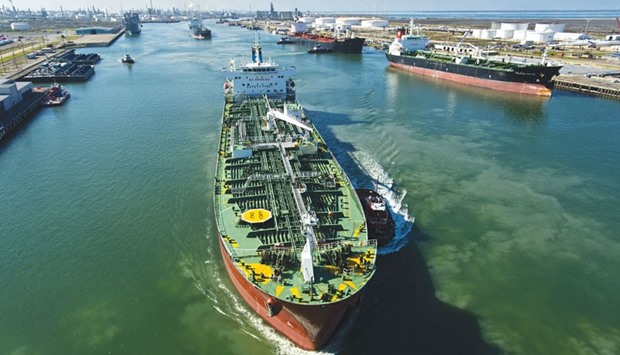A surprisingly strong payrolls report in the US yesterday failed to entice investors into stocks even as equities appeared oversold globally following a near 5% drop to start the year.
Brent crude oil extended its weekly slide to more than 10%, pressured by unrelenting oversupply and a bleak demand outlook. US crude was on track to post its largest weekly drop in more than a year.
Stocks had opened higher on Wall Street after data showed the economy created many more jobs than expected in December and previous months were revised higher.
But the S&P 500 hit its session high, up 0.9% on the day, within five minutes of the open and steadily lost ground since.
“The market’s reaction (to the jobs report) is something between curious and concerning,” said Richard Scalone, co-head of foreign exchange at TJM Brokerage in Chicago.
“People are skittish in holding positions. If you are long stocks, you think you might be saved by this jobs report. If they don’t go up, you are in trouble.”
Investors fear that China, the second-largest economy in the world, is growing more slowly than expected and could further weigh on commodity prices and global economic growth.
The Dow Jones industrial average fell 31.61 points, or 0.19%, to 16,482.49, the S&P 500 lost 4.25 points, or 0.22%, to 1,938.84 and the Nasdaq Composite dropped 10.64 points, or 0.23%, to 4,678.79.
Stocks and other risk assets got support from Asian markets after China nudged the yuan higher for the first time in nine days, easing fears that it had lost control of the currency, and as the Chinese stock benchmark rose 2%.
Europe initially followed suit, but the pan-European FTSEurofirst 300 index was down 1.3% going into the close of trading.
MSCI’s broadest gauge of stocks globally was little changed on the day and on track to fall 5.5% this week, the most since September 2011.
“What’s going to come out of China is a short-term concern for the market, so maybe the 5% decline we’ve seen is not quite enough,” said Andrew Slimmon, a Chicago-based portfolio manager at Morgan Stanley Investment Management, which manages more than $400bn in assets.
“But what’s most important is the payroll numbers coming out today highlight that the economy in the US has not in any way derailed.”
He said concerns are only near-term and the beginning of earnings season will “remind investors that the US micro story hasn’t changed.”
Traders are indeed more concerned near-term, with the spot price of the CBOE volatility index higher that futures three month down the line.
Barclays expects Chinese oil demand to grow by 300,000 barrels per day in 2016, down from an estimated 510,000 bpd last year.
New York’s West Texas Intermediate (WTI) oil collapsed to $32.10 a barrel, a level last seen in December 2003. And Europe’s benchmark oil contract, Brent North Sea crude, sank to $32.16, its lowest point since April 2004.
US Treasury yields were little changed following an initial yield rise after the bumper jobs data, which was quelled by a lack of wage gains. Continued safety bids also kept yields from climbing.
“The average hourly earnings pushes rate hikes back at the margin, but the payrolls number pushes them forward, so the market is putting those two elements together and concluding that the message is pretty neutral,” said David Keeble, head of US rates strategies at Credit Agricole Corporate and Investment Bank in New York.
US 10-year Treasury notes were up 5/32 in price to yield 2.1367% yesterday, from 2.153% late Thursday.
The dollar climbed on measures taken by China to ease this week’s market turmoil and on the payrolls data in the US, but gains were limited by worries over whether Beijing has done enough to calm its battered stock market.
The euro was down 0.3% against the dollar at $1.09, while the greenback was little changed versus the yen at 117.61.
On the upside, however, the star performer was gold which enjoyed a two-month peak.
The precious metal rallied yesterday to $1,113.57 an ounce, the best level since November 4.
Gold is regarded by many traders as a safe bet in times of market turmoil and geopolitical uncertainty.
“The risk-off trading environment created from the increasing geo-political tensions between Saudi Arabia and Iran combined with an unexpected nuclear test from North Korea have boosted appetite for safe haven assets consequently driving gold prices to a monthly high at $1102.50,” added FXTM analyst Lukman Otunuga.
The metal also scored more buying interest from rising geopolitical risk after North Korea’s latest nuclear test, and from China’s burgeoning crisis.
“Gold is one of the few commodities performing well in these markets, benefiting from its safe haven appeal,” said Oanda analyst Craig Erlam. Pages 5 & 11

A tanker sails out of the Citgo Refinery dock bound for Mexico with a load of gasoline at the Port of Corpus Christi in Texas. New York’s West Texas Intermediate (WTI) oil collapsed to $32.10 a barrel yesterday, a level last seen in December 2003. And Europe’s benchmark oil contract, Brent North Sea crude, sank to $32.16 yesterday, its lowest point since April 2004.


